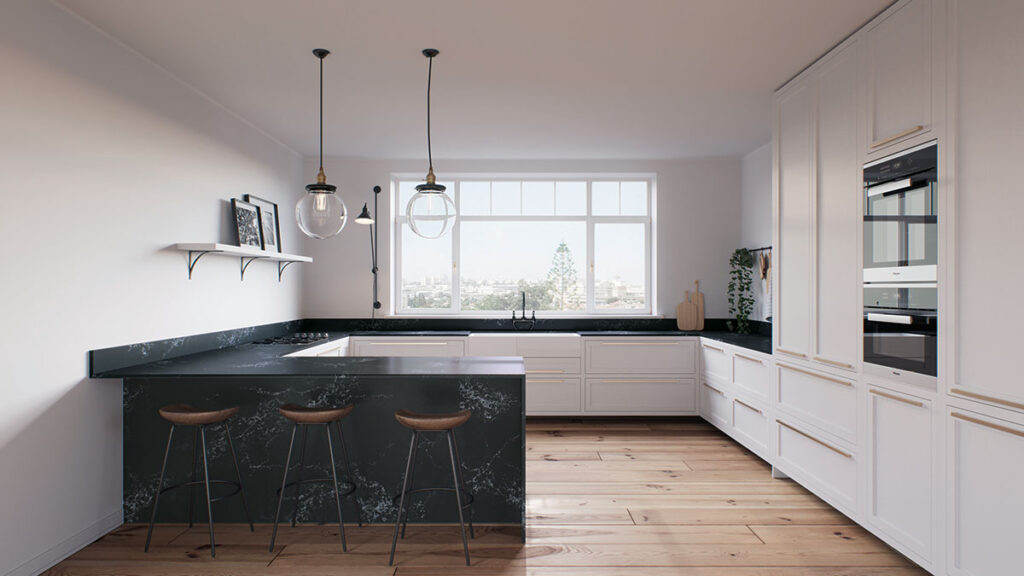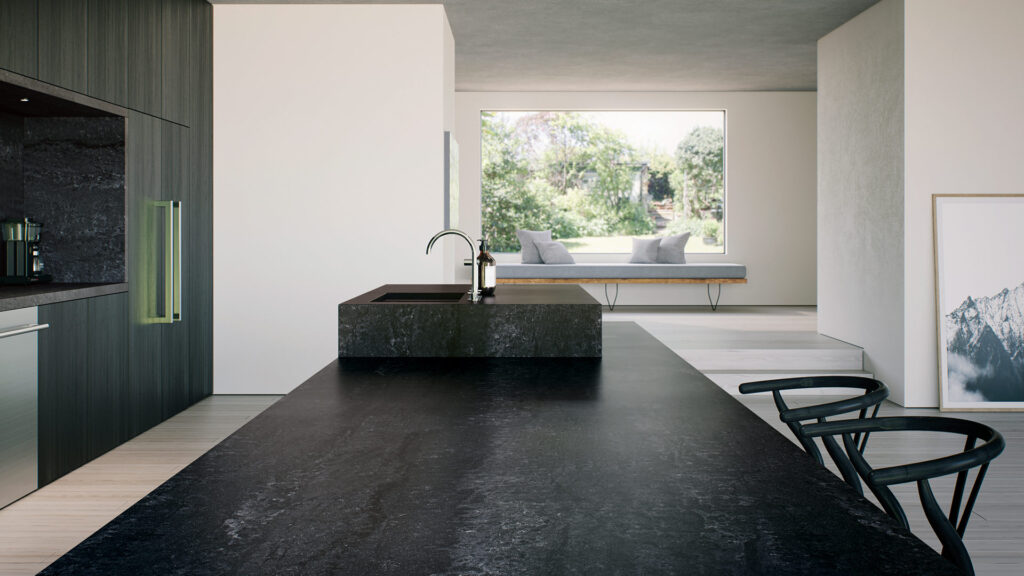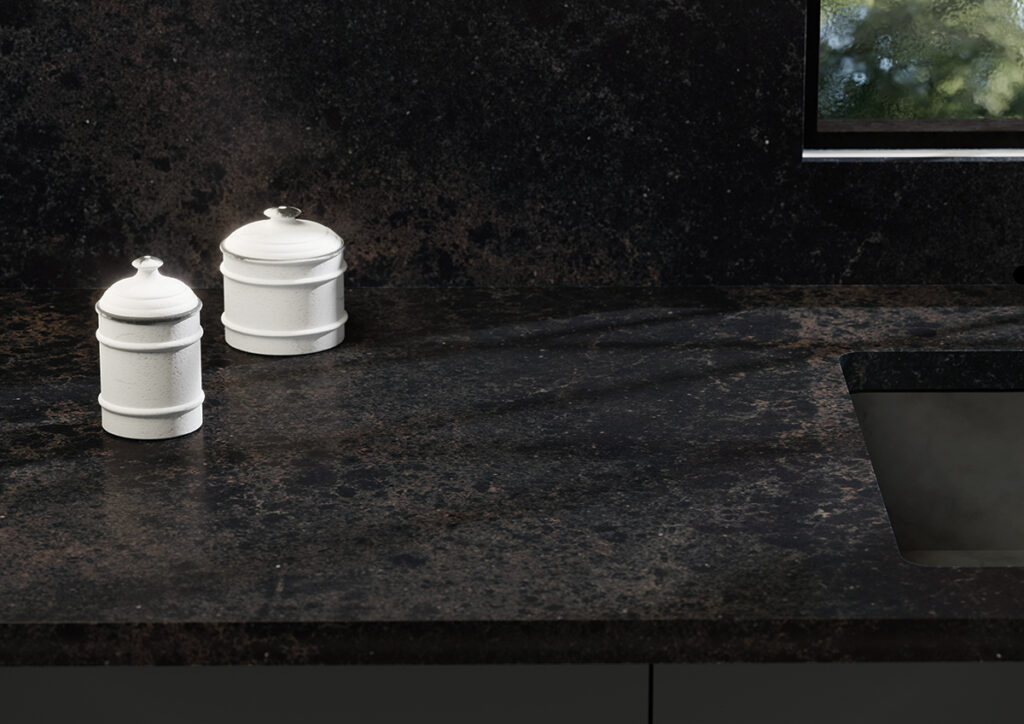7 Facts About Quartz Countertop Seams
6 min read
Quartz countertops are a go-to option for homeowners. The engineered stone (made up of 90% quartz and 10% resins and polymers) is very versatile and can be used as a countertop material in all areas, both commercial and domestic.
Despite quartz being a manufactured product, the size capacity of this stone is still limited. As such, quartz countertops in large spaces often require two or more slabs to be moulded together to achieve the desired size. And this process creates seams.
While Caesarstone does not cover or adjust seam appearance or performance, it’s clear that visible quartz counter seams can discourage homeowners from purchasing quartz countertops. Although there are certain drawbacks to seams, they can also ensure a safe installation of the slabs and can even enhance the look of quartz countertops.

A seam is a line that is formed when two countertop slabs are moulded together to create a unified surface. The majority of seams occur when the desired countertop size exceeds the dimensions of the actual slab. Another known cause of seams are accessibility issues, which often force a homeowner to cut the slab into more manageable pieces.
Some slabs can also be too big to transport, an occurrence that is most common in commercial settings. Similarly, if there is a custom or unique countertop configuration (such as an L-shaped countertop), seams are almost an inevitability.
A quartz countertop seam becomes problematic if it’s large and very conspicuous. For instance, large seams can ruin a space’s aesthetics, as they disrupt the flow of the countertop design.
Seams can also be difficult to clean and provide a conducive environment for bacteria to grow. Overall, these characteristics contribute to a negative connotation for seams and promote the belief that seams are a hindrance to quartz countertops.
When considering quartz, there may be some uncertainty as to how the chosen countertops will look in the desired space. There’s also the worry about whether there will be seams and if they’ll change the look of the area. While this constant worry is normal for homeowners, it’s important to understand that seams are okay and there’s a good chance they will occur.
For instance, homeowners who want larger islands should acknowledge the likelihood of seams. That being said, a qualified fabricator can make the seams as inconspicuous as possible.
Using quartz countertops minimizes this risk. Quartz countertops are manufactured, so the slabs are available in exact colours, styles and patterns. As such, seams are more easily able to blend into the countertop design. Rather than worrying about the presence of seams, homeowners can embrace all the beauty that their quartz countertops offer.
No homeowner wants to deal with seams that are wildly conspicuous. In cases where seams are unavoidable (such as in large spaces), homeowners are advised to use dark countertop colours with patterns. Caesarstone’s 5101 Empira Black or 5820 Darcrest make great options for homeowners who want to avoid conspicuous seams.

Engineered stone countertops such as quartz are made with pure quartz and adhesives. This is what gives quartz its renowned strength and hard-wearing nature. Since the amount and caliber of adhesives used differs between manufacturers, homeowners might purchase a low-quality quartz countertop slab without even knowing it, which can lead to visible seams.
Such an unfortunate scenario can be prevented by purchasing quartz countertops from reputable manufacturers such as Caesarstone.
Depending on the placement, a seam in a quartz slab can weaken the countertop material itself. Seams should always be placed in the countertop supports to maintain strength and reduce visibility.
As previously mentioned, a fabricator can make or ruin any homeowner’s quartz countertop experience. Even if the installation process is seamless, will the fabricator know how to work around countertop seam visibility? Caesarstone’s certified fabricators have extensive knowledge in quartz countertop fabrication.
This is the most common worry among homeowners regarding quartz countertop seams. After all, no homeowner wants to dig back into their pockets on another kitchen revamp after only a couple of years have passed. Quartz countertop seams are durable and will likely never be a point of worry. Remember: placement also matters, so be sure to watch out for that as well.
This comes as quite the surprise for many homeowners. While seams have a bad reputation, they can in some cases enhance the look of countertops. One of the most common techniques fabricators use to achieve a desirable seam in quartz countertops is book matching.
To achieve an eye-catching and striking vein match at the seam, fabricators polish opposing faces of the slab. Book matching is the perfect way to hide seams and achieve picture-worthy visual effects on vertical walls. Bookmatching can be achieved on a variety of countertop materials, whether veined or sparkled.

To achieve the perfect quartz countertop seam, homeowners should be aware of the following:
{{ subtitle }}
{{ i.desc }}
{{ subtitle }}
{{ subtitle }}